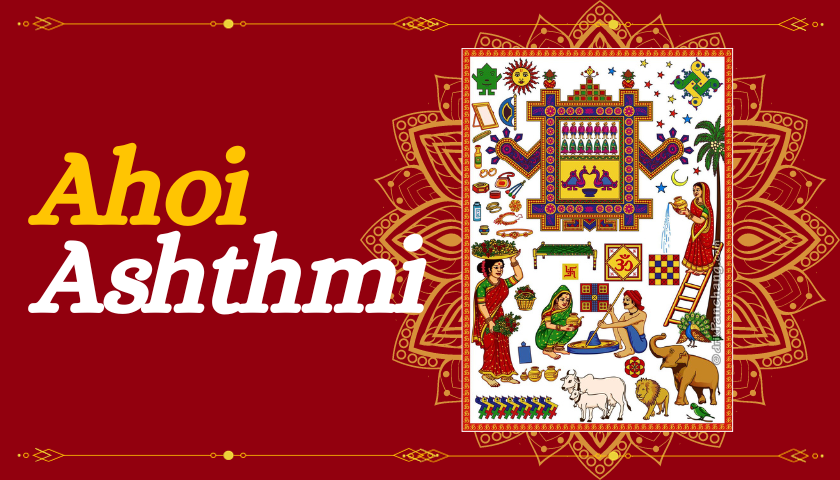Introduction
India is a land of diverse cultures and religions, each contributing its own unique festivals and traditions. Ahoi Ashtami is one such Hindu festival celebrated predominantly by mothers for the well-being and prosperity of their children. Observed on the eighth day of the Krishna Paksha (waning phase of the moon) in the Hindu month of Kartik, which usually falls in October or November, Ahoi Ashtami holds great significance for families, especially in Northern India. This article delves into the history, rituals, and significance of Ahoi Ashtami.
Historical Origins of Ahoi Ashtami
The roots of Ahoi Ashtami can be traced back to ancient Indian mythology and legends. One popular tale is associated with the Mahabharata. It is believed that Draupadi, the wife of the Pandavas, observed a similar fast for the well-being of her sons. Another legend connects Ahoi Ashtami with the story of a woman named Ahoi who mistakenly killed her own offspring while digging the earth. Filled with remorse, she fasted and prayed for forgiveness. Her devotion was said to have pleased the goddess Ahoi Mata, who granted her a boon and revived her children. In honor of this event, Ahoi Ashtami is celebrated with great fervor.
Rituals and Observance of Ahoi Ashtami
- Fasting: Ahoi Ashtami is primarily a fasting day observed by mothers for the welfare of their children. Women, and sometimes even the entire family, abstain from consuming food and water throughout the day. The fast is broken only after sighting the stars in the evening, which signifies the end of the Ashtami Tithi.
- Preparation: Days before Ahoi Ashtami, women prepare for the festival by cleaning their homes and decorating the puja area. A portrait or image of Ahoi Mata is placed on a wall, and a small pot or a clay image of a lion is kept nearby, symbolizing the vehicle of Ahoi Mata.
- Prayers and Storytelling: Women gather in the evening, often in groups, to recite the Ahoi Ashtami vrat katha (the story of the fasting). This story narrates the significance and origins of the festival. Prayers are offered to Ahoi Mata for the well-being and longevity of their children.
- Drawing Ahoi Mata’s Image: In some regions, women draw the image of Ahoi Mata on the wall using geru (red soil) or rice flour. This image is then adorned with vermillion and turmeric.
- Observing the Stars: The fast is broken only after sighting the stars in the evening. A common practice is to break the fast after sighting the Arundhati star, which symbolizes the ideal mother.
- Feasting: After the fast is broken, a delicious meal is prepared and enjoyed with family and friends. Sweets and savories are shared with neighbors and relatives.
Significance of Ahoi Ashtami
Ahoi Ashtami is not just a religious ritual but a profound expression of a mother’s love and concern for her children. It is a day when mothers reflect on their responsibilities and pray for the health, happiness, and long life of their offspring. The festival fosters a sense of unity among family members and neighbors, as they come together to celebrate and share the joys of motherhood.
Furthermore, Ahoi Ashtami serves as a reminder of the important role played by mothers in shaping the future of their children. It reinforces the idea that maternal love and blessings are invaluable in a child’s life.
Conclusion
Ahoi Ashtami is a beautiful and meaningful Hindu festival that celebrates the love, devotion, and selflessness of mothers. It is a day when women fast, pray, and come together to seek the blessings of Ahoi Mata for the well-being of their children. The festival not only has religious significance but also strengthens family bonds and the sense of community. Ahoi Ashtami is a testament to the rich cultural and spiritual tapestry of India, showcasing the deep reverence for motherhood in Hindu traditions.

